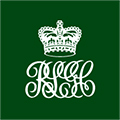A major part of our project is the native landscape rehabilitation. Royal Sydney has worked with leading ecologists to develop a comprehensive native restoration using local endemic plant species to create a more sustainable, biodiverse landscape.
In this new landscape, mowing, watering and fertiliser applications will be unnecessary amid groves of trees and heathland plantings, significantly boosting habitat available for an increased array of fauna, including native invertebrates, frogs, reptiles, birds and bats.
Royal Sydney has worked with ecological consultants, Cumberland Ecology, to develop a Biodiversity Management Plan – a schedule of ongoing conservation, restoration and maintenance activities for the flora and fauna to be retained on the site, as well as the tasks, procedures and methods to achieve this.
